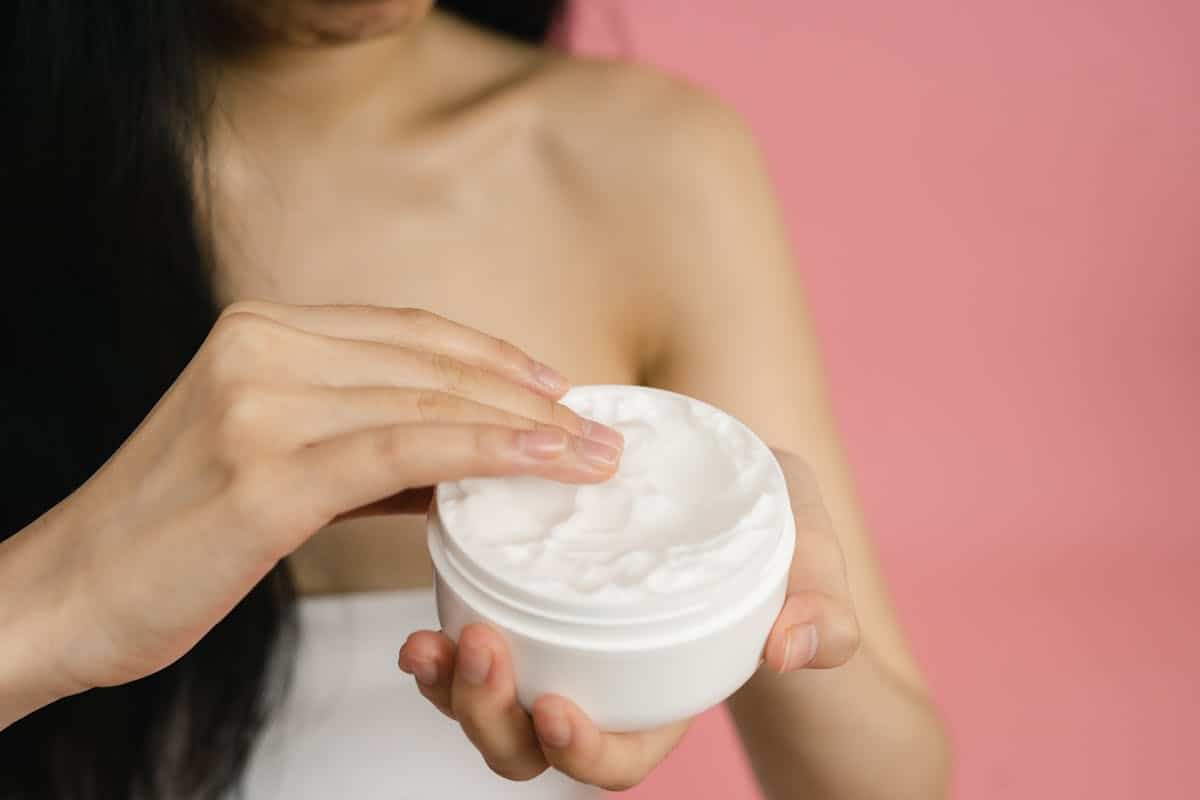Here is your complete guide to the tallow lotion recipe.
Introduction to Tallow Lotion Recipe
Crafting your own tallow lotion is a rewarding way to nourish your skin with natural, time-tested ingredients. This tallow lotion recipe guide will walk you through everything—from understanding tallow’s unique benefits to rendering your own fat and creating a smooth, luxurious lotion. Whether you have dry, sensitive, or aging skin, this deeply moisturizing lotion could be your new favorite skincare staple.
A tallow lotion recipe taps into the ancient wisdom of using animal fats for skin care, a practice dating back centuries. Today, tallow is experiencing a resurgence for its incredible skin benefits and sustainability. This tallow lotion recipe blends tradition with modern DIY craft to give you a natural moisturizer rich in vitamins A, D, K, and fatty acids that closely resemble human sebum.
Unlike commercial lotions brimming with synthetic chemicals, a handmade tallow lotion recipe offers you control over the ingredients, ensuring purity and quality. This recipe will highlight:
- Why tallow is such an effective moisturizer
- How to select and prepare ingredients for the best lotion
- Detailed steps to make the lotion at home
- Variations and troubleshooting tips
- Storage and safety guidelines
Incorporating the tallow lotion recipe into your skincare routine can soothe dry, irritated skin, promote healing, and provide lasting hydration. Throughout this article, you’ll gain a comprehensive understanding of how to craft and customize your own lotion optimized specifically for your skin needs.
What is Tallow and Why Use It in a Lotion?
Tallow is rendered animal fat, most commonly from beef or lamb, known for its creamy texture and skin-loving nutrients. Historically, tallow has been used in soap making, skincare, and even cooking due to its stability and nourishing properties.
Key Benefits of Tallow in Skincare:
- Rich in Vitamins A, D, and K: Vital for skin repair, elasticity, and overall health
- Fatty Acid Profile: Contains oleic, palmitic, and stearic acids, which closely mimic human skin’s natural oils, helping to strengthen and protect the skin barrier
- Anti-inflammatory & Healing: Supports conditions like eczema, psoriasis, and dry cracked skin
Comparing Tallow with Other Common Skin Butters
| Ingredient | Texture | Comedogenic Rating | Key Benefits | Typical Use |
|---|---|---|---|---|
| Tallow | Soft, creamy | 2-3 | High vitamins, skin barrier | Lotion, balm, soap |
| Shea Butter | Firm | 0-2 | Deep moisturizing, anti-inflammatory | Lotion, cream |
| Cocoa Butter | Solid | 2-4 | Antioxidants, long-lasting moisture | Lotion, lip balm |
Many worry tallow might be greasy or clog pores, but when properly rendered and balanced with the right oils, tallow lotion is lightweight, absorbs well, and rarely causes breakouts.
Ingredients for a Perfect Tallow Lotion Recipe
Crafting an effective tallow lotion requires careful selection of the following ingredients:
- Rendered grass-fed tallow: Base of the lotion—nourishing and creamy
- Distilled water: Hydrates and balances texture
- Emulsifying wax: Helps blend oil and water into a stable lotion
- Stearic acid: Thickener and stabilizer for smoothness
- Liquid oils: Such as jojoba, olive, or almond oil for extra moisture and skin benefits
- Preservatives: Natural or synthetic (e.g., Optiphen Plus, Phenonip) to prevent mold and spoilage
- Essential oils: For fragrance and added skin benefits (lavender, geranium, lemongrass recommended)
Choosing Your Ingredients:
- Opt for organic, grass-fed tallow when possible for purity and nutrient density.
- Liquid oils should be cold-pressed and unrefined to retain natural antioxidants.
- Preservatives are essential in lotions with water to keep products safe and long-lasting.
- Essential oils should be skin-safe and used sparingly, especially for sensitive skin.
Step-by-Step Tallow Lotion Recipe Instructions
Ingredients by weight example:
| Ingredient | Weight (oz) |
|---|---|
| Distilled water | 5.6 |
| Stearic acid | 0.4 |
| Emulsifying wax | 0.4 |
| Grass-fed tallow | 0.76 |
| Liquid oil | 0.76 |
| Preservative | 24 drops |
| Essential oils | 48+ drops |
Instructions:
- Melting oils and emulsifiers:
Weigh tallow, liquid oil, emulsifying wax, and stearic acid into the top of a double boiler. Gently heat until fully melted and combined. - Creating the emulsion:
Remove from heat. Slowly pour distilled water in a thin stream into the melted oil mixture while whisking vigorously to combine. - Adding preservatives and fragrance:
Once the mixture thickens (usually after a few minutes of whisking), add preservative and essential oils. Stir well to blend. - Cooling and packaging:
Pour the lotion into clean containers. Allow to cool undisturbed; texture will thicken further as it cools.
Tips for best results:
- Use a glass or stainless steel container for mixing. Avoid plastics that may interact with oils.
- Constant whisking during emulsification is key for a smooth texture.
- Store lotion away from direct sunlight and heat to prevent spoilage.
Benefits of Using Tallow Lotion on Different Skin Types
Tallow lotion suits a wide range of skin types due to its balanced fatty acid composition.
- Dry skin: Restores moisture and skin barrier, deeply nourishing and smoothing rough patches.
- Oily/combination skin: Lightweight and non-greasy when formulated with proper oils; can balance natural oil production.
- Sensitive skin: Anti-inflammatory properties soothe irritation and redness.
- Aging skin: Rich vitamins aid in skin repair, increasing firmness and reducing fine lines.
Special skin conditions:
- Safe and beneficial for eczema, psoriasis, cracked heels, scars, and dermatitis due to healing fatty acids.
- Always patch test before full use to check for sensitivities.
How to Render and Prepare Your Own Tallow for Lotion
Rendering your own tallow ensures freshness and quality control.
Step-by-step rendering:
| Step | Procedure |
|---|---|
| Chop or grind fat | Cut suet or fat into small chunks |
| Melt | Use low heat in a slow cooker or double boiler until fat liquefies |
| Strain | Pour melted fat through cheesecloth to remove impurities |
| Cool and store | Let cool; solid fat is your tallow, store airtight in cool place |
Homemade tallow typically has better aroma and nutrients than store-bought, which may be processed with additives.
Storage, Shelf Life, and Safety of Tallow Lotion
Proper storage extends the life and effectiveness of your lotion.
- Store in airtight, opaque containers to avoid oxidation.
- Refrigerate if you don’t use preservatives; otherwise, store at room temperature in a cool, dark place.
- Shelf life with preservatives: 3-6 months; without, about 1-2 weeks.
- Signs of spoilage: off smell, mold, or separation.
Additional Recipes and Variations Using Tallow Lotion
Explore creative ways to enjoy this base lotion:
| Recipe Type | Tallow (%) | Liquid Oil (%) | Water (%) | Additives (Examples) | Texture | Recommended Use |
|---|---|---|---|---|---|---|
| Basic Lotion | 10 | 10 | 75 | Preservative, essential oils | Light, smooth | Daily moisturizing |
| Whipped Balm | 50 | 20 | 0 | Essential oils | Thick, fluffy | Intense hydration, balms |
| Herb-Infused Lotion | 15 | 10 | 70 | Calendula infusion, antioxidants | Medium | Soothing, healing |
| Tallow & Honey Lotion | 12 | 8 | 75 | Raw honey, preservative | Medium | Extra moisturizing, healing |
Whipped Tallow Balm:
- Whip cooled solid tallow with oils using an electric mixer for a luxuriously light texture.
- Great for targeted hydration and a richer feel.
Herbal Infusions:
- Infuse tallow with herbs like calendula or chamomile for added skin-soothing properties.
- Strain out herbs before making lotion.
FAQs About Tallow Lotion Recipe
What is the best tallow to use for lotion?
Grass-fed, organic, and properly rendered tallow offers the best nutrients and purity.
Read Also: Shampoo for Blonde Hair.
Can tallow lotion clog pores or cause acne?
Tallow rates 2-3 on the comedogenic scale, generally safe for most skin types, but oily or acne-prone skin should patch test or use low-comedogenic oils.
Read Also: Coconut Oil as Massage Oil.
How long does homemade tallow lotion last?
With preservatives, 3-6 months; without, 1-2 weeks refrigerated.
Read Also: Blonde Hair Mascara Color.
Can I use tallow lotion on my face?
Yes, especially when light oils are used; patch test first.
Read Also: Hair Dye Honey Blonde.
Is tallow lotion safe for sensitive skin and babies?
Usually yes, due to natural fatty acids and vitamins, but always test first.
Read Also: Sun Protection for Hair.
What preservatives are best for tallow lotion?
Optiphen Plus and Phenonip are popular, effective, and relatively natural options.
Read Also: Honey Hair Mask.
Can I add other natural ingredients?
Yes, such as honey, aloe, or herbal infusions.
Read Also: Coconut Oil Hair Food.
Can I make a vegan alternative?
No, as tallow is animal fat, though plant-based butters serve as alternatives.
Read Also: Best Coconut Oil for Oil Pulling.
Conclusion
Creating your own tallow lotion at home is a wonderful way to embrace natural skincare, harnessing the nourishing power of a traditional ingredient that closely mimics our skin’s own oils. This tallow lotion recipe provides a rich yet lightweight moisturizer packed with essential vitamins and fatty acids that support skin health, repair, and hydration for all skin types. Whether you choose to use store-bought or rendered homemade tallow, combining it with quality oils, emulsifiers, and preservatives ensures a safe, effective product.
Read Also: Coconut Hair Oil.
By making your own lotion, you gain complete control over each ingredient, allowing customization to suit your skin’s unique needs. The versatility of tallow lotion extends beyond basic moisturizing — from soothing sensitive or irritated skin to forming the luxurious base of balms and herbal-infused creams.
Read Also: Skincare Routine Step Face Tanner.
References and Resources Used in This Article:
- Tallow, Rendered Animal Fat, and Its Biocompatibility With Skin – PMC.
- DIY Whipped Tallow Balm (Only 3 Ingredients!) – The Homesteading RD.
- Is tallow really worth the hype? (And how to make your own tallow balm) – Formula Botanica.
- Tallow and DIY skincare: Everything you need to know – Humblebee and Me.
- Tallow, Rendered Animal Fat, and Its Biocompatibility With Skin – PubMed.
- Beef tallow as skin care? Experts explain what’s truth—and myth – National Geographic.
- I Put Beef Tallow on My Face for 7 Days—Here’s What Happened – Prevention.
- How to Make Silky Whipped Tallow Balm – Wellness Mama.

